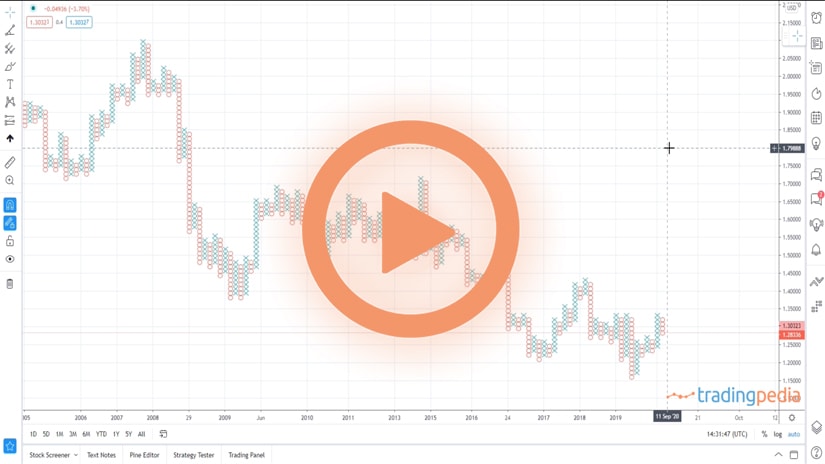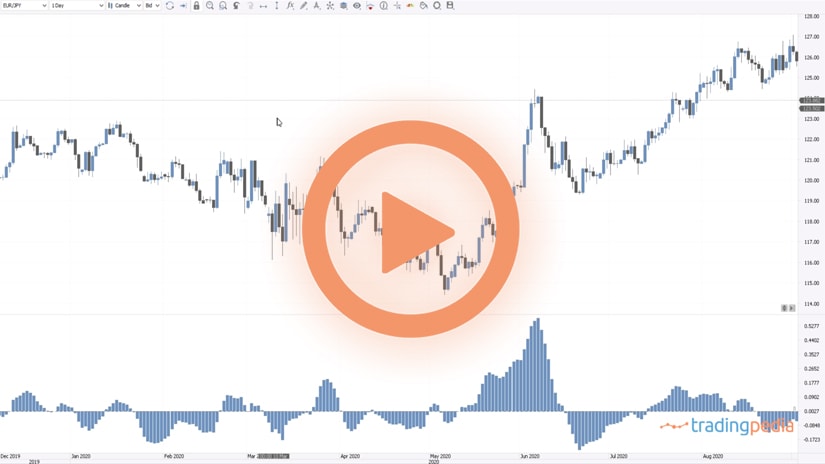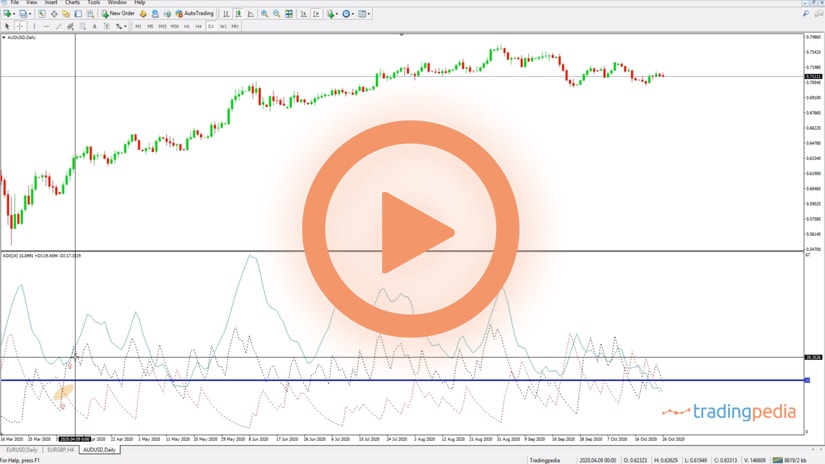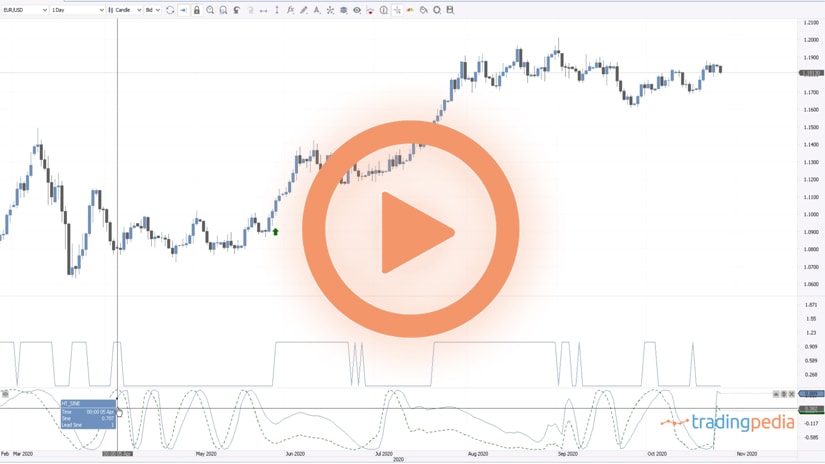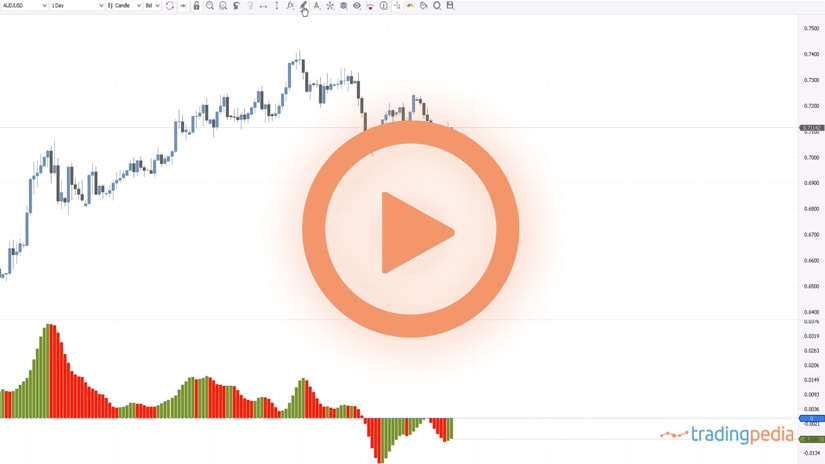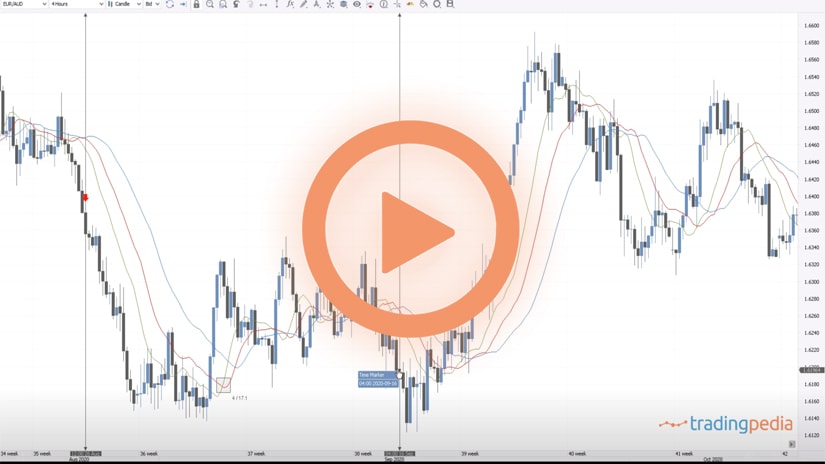
Hello there, this is tradingpedia.com and today we will discuss the Pivot Points, an effective indicator available for trading. This indicator does not come with the default indicators on the MetaTrader, so you need to be aware of that. But anyways, you can find it on the Internet and import it by just following the steps on how to import an indicator on MetaTrader as presented in a previous video part of this trading academy.
Pivot Points – Overview
These lines here represent support and resistance. The idea behind this indicator is that it will project future support and resistance levels based on the prices on the left side of the chart.
Resistance and Support
This is the EURUSD on the 4h chart and every time the pivot shows three times above and below the closing price of the previous pattern. It means that the lines above represent resistance and the lines below represent support. If we look closer, we see that the pivot point is 1.1815 and the market now trade 1.1825. Therefore, the first level of resistance is 1.1835 and the first level of support is 1.1804. So, if the market reaches one of the two levels, we should short against resistance or go long against support.
The second level of resistance and support, R2 and S2, 1.1846 – 1.1785, and the last ones, R3 and S3, 1.1865 – 1.1773. Now, why are these important? Because many traders use an approach called scaling into a position, they use the fact that the market have the tendency to come to the pivot point.
At this point in time we see that the EURUSD reached the first level of resistance, 1.1835 and now fell back to 1.1824. In this case, scalpers use small distances and trade a bigger volume in order to make up for the small distance.
If the EURUSD keeps moving and reaches the R2 level, they will go twice or three times the regular volume. Therefore, when averaging the entry price on the short side on this one, the target will not be the pivot anymore, but higher.
What is interesting is that these levels are projected based on the closing prices on the previous candlestick. As it is valid with all support and resistance levels, the bigger the timeframe, the stronger the support and resistance levels.
To make the most of it, we can adjust the indicator to consider not only the 4h chart, but bigger timeframes too, like the daily or monthly chart. We see that the pivot on the monthly chart seen her is 1.1742, meaning that these levels were valid for the start of October until the end of it. It means that the EURUSD did not reach resistance nor support. But traders also use 50% or 61.8% retracement between levels to find out intermediate support or resistance levels.
In this case, the market met resistance at 50% retracement before coming back to the pivot. The point is that the bigger the timeframe, the bigger the support or resistance.
If we go on the weekly chart, this week the EURUSD kept a tight range, probably because of the US elections in front of us – the market is not taking any chance.
Let’s go back on the lower timeframes to interpret the indicator better – the 4h chart. When you scalp on a daily basis, these are main support and resistance levels. As a scalping technique, we go long 1.1804 with a stop-loss at the second support. If we set a stop that large with a take profit level so small, it doesn’t make sense. Therefore, the idea is to use a scaling approach between the levels.
Effectively, it means to divide the entries into three equal parts and targeting the pivot point and place a stop loss in such a way for the trade to make sense from a risk-reward ratio point of view. The problem is that we don’t know if the market, by the time it goes beyond the third level or resistance or support, will come back to the pivot point.
One thing is for sure – the price will have a difficult time exceeding S1, S2, S3, respectively R1, R2, R3, as each of them is tougher to break. Some traders also use the interchangeability between support and resistance, but it is not recommended in this case.
Related Videos
Conclusion
To sum up, the pivot indicator can be applied on all timeframes, it takes the values from the previous price action, it projects three resistance and support levels, above, respectively below the pivot point, and the idea is to sell resistance and buy support, and sometimes scale between the levels.
Thank you, and bye, bye.
